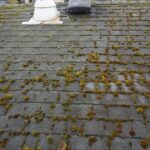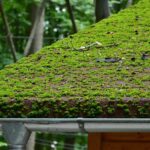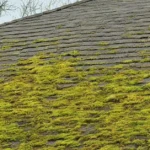Choosing the right roof sealant is crucial for maintaining the integrity of your home. As a homeowner, you might be overwhelmed by the variety of options available. In this guide, we’ll delve into what kind of roof sealant should you use to ensure your roof remains in top condition. This decision is important because the right sealant can extend the life of your roof, prevent leaks, and save you money in the long run.

Understanding Roof Sealants
Roof sealants are materials used to seal cracks, joints, and seams in roofing systems. They serve multiple purposes, including waterproofing, improving the roof’s durability, and enhancing its appearance. With different types available, it is essential to select a sealant that matches your specific roofing needs.
Why Use Roof Sealants?
Roof sealants are vital for protecting your home from water damage, especially in areas prone to heavy rainfall or snow. They provide a protective barrier that prevents water from seeping into the structure. This not only helps in maintaining the structural integrity of your home but also improves energy efficiency by preventing heat loss.
Types of Roof Sealants
There are several types of roof sealants, each with its unique properties and benefits. Understanding these can help you make an informed decision.
Acrylic Sealants
Acrylic sealants are popular due to their affordability and ease of application. They are water-based and provide excellent UV protection, making them ideal for sunny climates.
Silicone Sealants
Silicone sealants offer superior water resistance and flexibility. They are perfect for roofs that experience extreme weather conditions as they maintain their properties in both hot and cold temperatures.
Polyurethane Sealants
Polyurethane sealants are known for their durability and strong adhesive properties. They are suitable for various roofing materials and provide a long-lasting seal.
Factors to Consider When Choosing a Roof Sealant
When deciding what kind of roof sealant should you use, consider the following factors:
Roof Material
The type of material your roof is made of can influence your choice of sealant. For example, metal roofs may require a different sealant compared to asphalt shingles.
Climate and Weather Conditions
The climate in your area also plays a significant role. For hot and sunny areas, UV-resistant sealants like acrylic are ideal. In contrast, silicone sealants are better suited for regions with frequent rain or snow.
Application Method
Consider whether you plan to apply the sealant yourself or hire a professional. Some sealants are easier to apply than others and may require specific tools or techniques.
Benefits of Using the Right Roof Sealant
Using the correct roof sealant can bring several benefits, such as:
Enhanced Roof Longevity
A good sealant can significantly extend the life of your roof by protecting it from the elements and preventing damage.
Cost Savings
By preventing leaks and damage, you can save on costly repairs and replacements in the future. A small investment in a quality sealant can lead to substantial savings.
Improved Energy Efficiency
Sealants can help improve your home’s energy efficiency by preventing heat loss and minimizing the need for additional heating or cooling.
How to Apply Roof Sealant
Applying roof sealant might seem daunting, but with the right preparation and tools, it can be a straightforward process.
Preparation
Before applying the sealant, clean the roof surface thoroughly to remove dirt, debris, and old sealant. This ensures the new sealant adheres properly.
Application
Depending on the type of sealant, you may need a brush, roller, or spray applicator. Follow the manufacturer’s instructions for the best results.
Drying Time
Allow the sealant to dry completely before exposing it to water or foot traffic. This can take anywhere from a few hours to a couple of days, depending on the product and weather conditions.
Common Mistakes to Avoid
When using roof sealants, avoid these common mistakes:
Using the Wrong Type of Sealant
Ensure the sealant is compatible with your roof material to avoid adhesion issues and potential damage.
Ignoring Manufacturer Instructions
Always follow the manufacturer’s guidelines regarding application, drying time, and safety precautions.
Skipping Surface Preparation
Proper preparation is crucial for effective adhesion. Skipping this step can lead to sealant failure.
Maintaining Your Roof After Sealant Application
Once you’ve applied the roof sealant, regular maintenance is key to ensuring its effectiveness.
Regular Inspections
Conduct regular inspections to check for signs of wear or damage. This can help you address issues before they escalate.
Cleaning
Keep the roof free from debris and dirt to maintain the sealant’s protective barrier. You can learn more about cleaning techniques in our article on remove sap from roof.

Frequently Asked Questions
Can I apply roof sealant myself?
Yes, many sealants are designed for DIY application. However, if you’re unsure, it’s best to consult a professional.
How often should I reapply roof sealant?
This depends on the type of sealant and your local climate. Generally, reapplication every few years is recommended.
What is the best time of year to apply roof sealant?
Spring or fall are ideal for applying sealants, as moderate temperatures ensure proper drying and adhesion.
For more information on maintaining your roof, check out our guide on maintain roof after snow.
For additional tips on roof maintenance, visit Tips for Roof Maintenance by Openly.
This article contains affiliate links. We may earn a commission at no extra cost to you.








